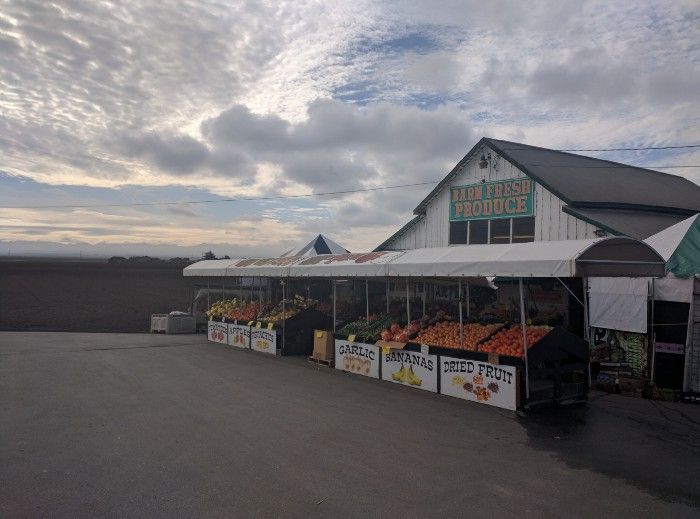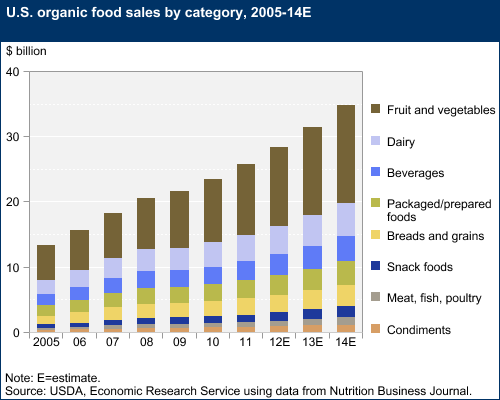Lowering the Cost Curve for Organic Transition
Gary Zimmer, founder of Midwestern Bio Ag, gave me my favorite statistic of the last year. We got to talking about tech adoption in soybeans, and I had to admit I didn’t have anything to offer: there is simply no way to make a living growing soybeans at $300/ac from what I can comprehend. But the statistic is this: he makes $2000/ac growing soybeans. Organic soybeans.
This disparity is so stunning to me. The fact that it persists, despite the expansion of organic acres to their greatest extent in the modern era, indicates that there are significant barriers to becoming an organic farmer, in essence creating a kind of monopoly just like my old alma mater UC Davis has done by restricting the supply of veterinarians. But unlike the livestock that depend on vets, the demand for organic, GMO-free, transparently produced, or in some way identity preserved food is growing so intensely that an ever increasing supply of organic, GMO-free, and transparently produced crops is not enough to keep up, so a giant price differential persists — enough so that this constraint to supply shows up in the risk factors for the recent Blue Apron IPO offering. I’ve come to interpret this price difference as an up-front cost that a farmer has to pay in order to make the leap towards gaining that revenue, much as a homeowner has to pay to install solar panels.
Technology fundamentally reduces the costs or increases the performance of some part of the economy: increasing the bandwidth of communications wires, or doubling the energy density of a battery. So let’s think for a moment about technologies to lower the cost curve of adopting progressive agricultural practices. Consumers win because their economic power is used to help create the vision of sustainable resource use they desire (and so they don’t have to pay crazy money for organic foods), food brands win because it broadens the availability of raw materials and helps tell a brand story around identity preserved foods that is increasingly valuable, and farmers win, because nearly every producer is willing to give up a bit of the current price premium for long-term, stable contracts that reduce wild revenue swings. You don’t need to win a Nobel Prize to know that people will pay extra (or give up a little) to have a sure thing. So unsurprisingly, many technologies that lower the cost curve essentially address risk, or the perception of risk on the farm.
Here are the big costs of transitioning to progressive practices from our vantage point, and some innovations that address these: reducing paperwork, revenue risk, crop marketing, and accelerating learning.
Reducing paperwork
For most farmers, “organic” or “sustainable” means “paperwork” and “more regulations.” Sow Organic took on this inglorious challenge by creating the “turbo tax” of organic farming, lowering the burden of filling out and maintaining records that allow certification by regulatory bodies like CCOF or Oregon Tilth. When you go to a local farmer’s market and see a basket of strawberries that says “pesticide-free” it almost certainly means that they are virtually organic but the burden of paperwork, not to mention the payment to the regulator, is an obstacle to becoming certified. Because audits and inspections are highly manual, relying on binders of paper records, they are labor-intensive, and therefore expensive. By digitizing the process, Sow Organic lowers the time and expense for both regulators and farmers.
Growing demand for organic food by category, credit: USDA
Revenue risk
At Arable we tend to see the ag supply chain through risk, which here means the perception that transitioning will result in higher costs or lower yields. Perception is critical here, because the scientific literature says that there is no agronomic reason for a yield hit in even the first year of production. There have been a few proposals for bridging this gap, such as “certified transitional” that could enable growers to capture some price premium. Another route is insurance: CropPro is an interesting company that is actually developing insurance products for this market, including organic transitional insurance to cover yield losses, or insurance with a lower premium for soils with the higher organic matter associated with organic or reduced-tillage production.
Crop marketing
One of the challenges with growing a specialty crop, which is by definition not an exchange-traded commodity like corn or soy, is the relative scarcity of buyers and sellers makes them hard to find each other. In this sense, organic soy is far more like cilantro than conventional soy, as a buyer who finds a seller will tend to work with the same grower for years. A side effect of this fragmented market is lack of transparency about prices. How does anyone know what the “real” price of organic soy is? Opaque, fragmented markets tend to scare most people off, in essence raising marketing costs and uncertainty around contract prices. Mercaris are an innovative solution to this problem, by developing a market intelligence report and trading platform for organic and non-gmo commodities, which reduces marketing costs and benchmarks market prices for participants.
Accelerating learning
The flip side of there being no agronomic reason for yield losses in organic transition is that farmer experience and learning really does play a role in yield losses. Organic or pesticide free impose constraints on what can be done, even as Integrated Pest Management advocates use of a broader set of tools to protect crops. The more complex piece comes with monitoring the biology that is happening in the field and dealing proactively with issues around fertility, plant protection, and irrigation. Keeping up with the IPM checklist is a full-time job! At Arable we see opportunities to make data collection easier, and use these data to enable forecasts to get out ahead of all those checklists and disease calculators to respond before there is economic damage.
This is an exciting tech landscape because it recognizes that few of the barriers to organic are agronomic, but are centered around paperwork, marketing, operations, insurance: all those mundane but essential pieces that are prominent in any small business. We have come to see a central place for digital agriculture in this mix, because all of these efforts succeed with easier collection and use of field data.
Find out more about Arable at our website.


